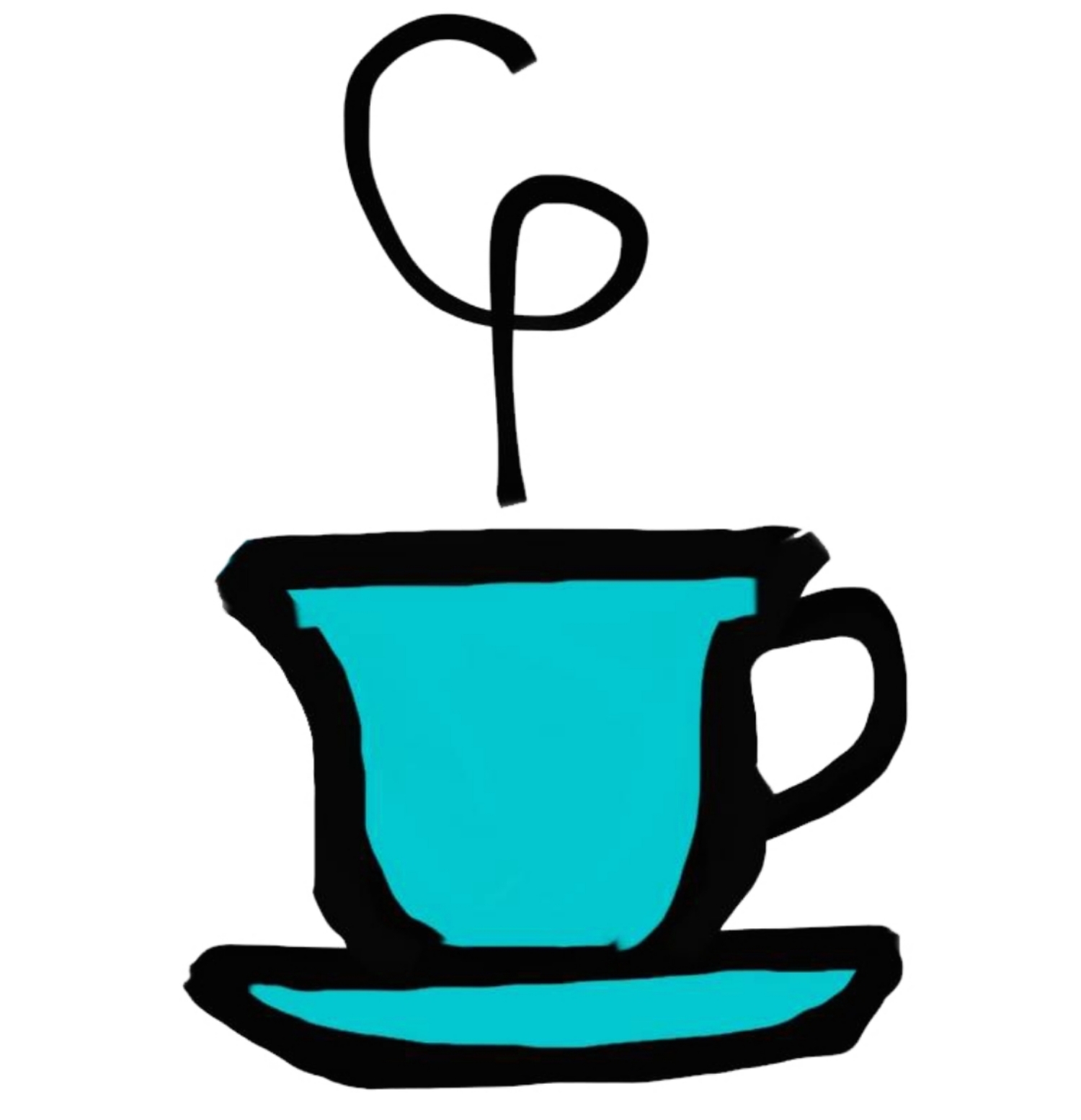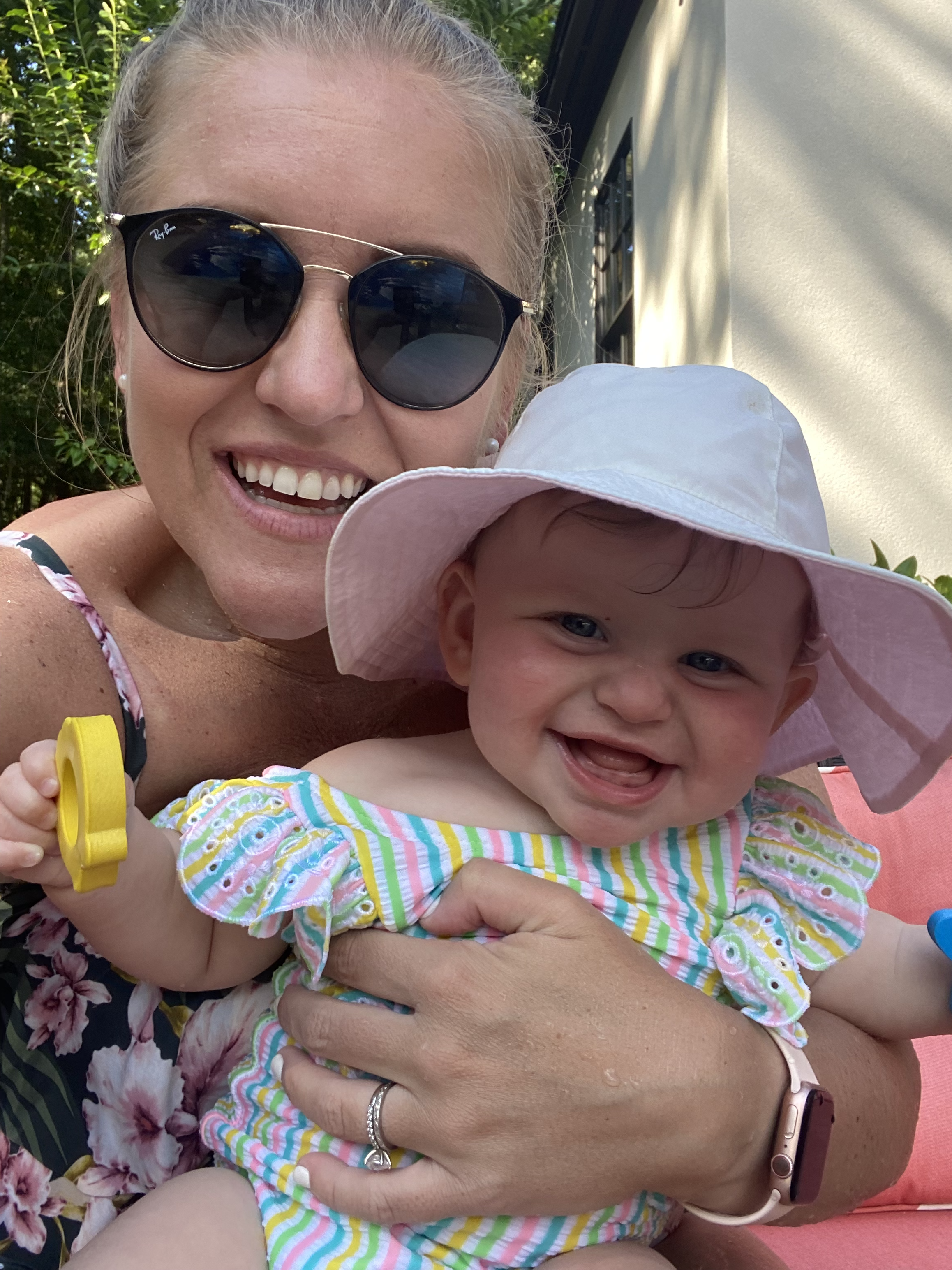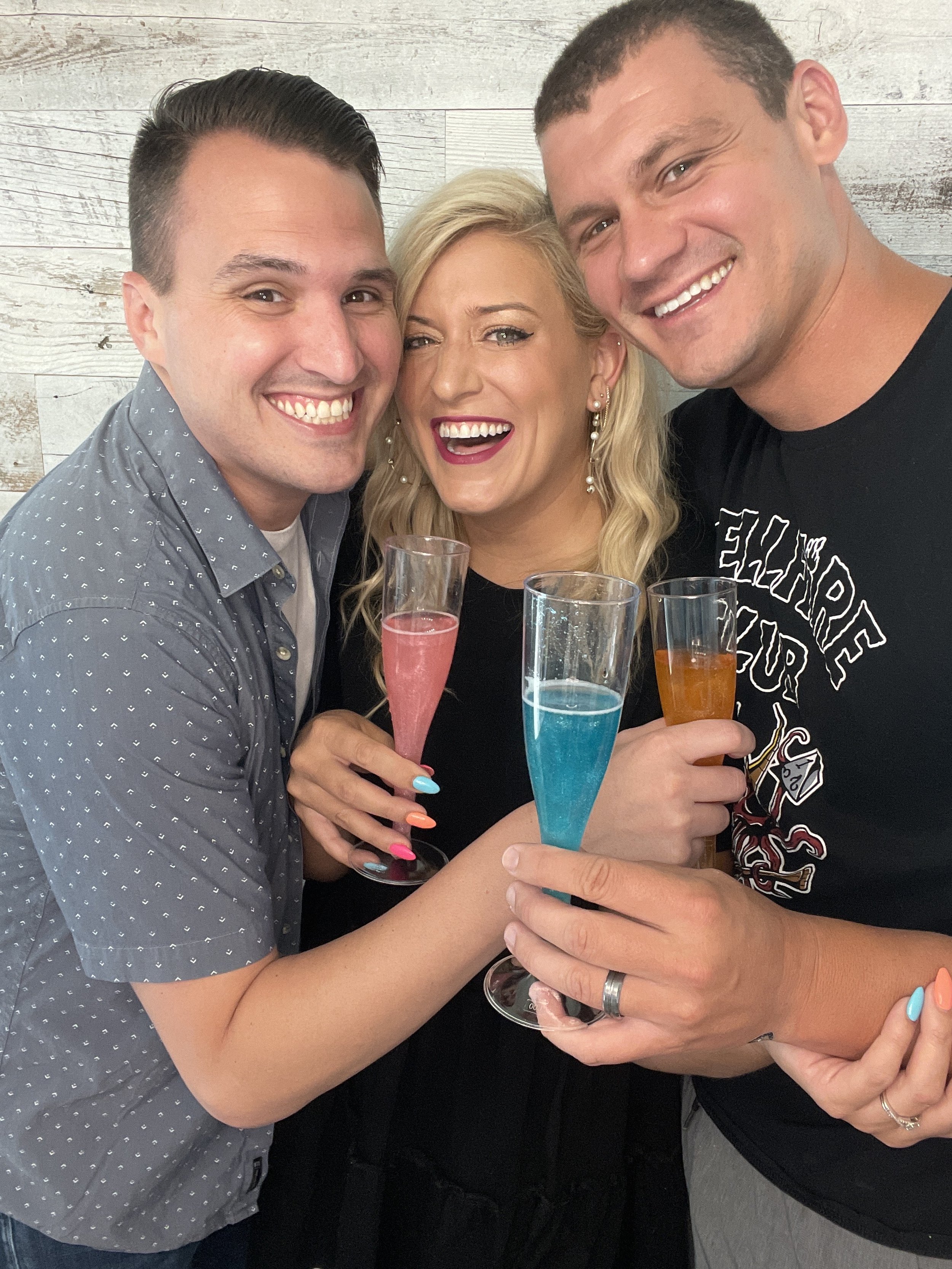Finding Focus
/What happened when Chef’s Table cinematographer Chloe Weaver finally started saying her career ambitions out loud.
Everyone thinks I’m an extra.
I’m sitting on a circle couch in a fancy hotel lobby in LA, and most everyone else milling about is dressed for a fictional brunch, extras in a TV show filming in the open dining room just across the lobby.
The screen of one camera is just eight feet away from me and I watch the scene through it, zooming in and out on an actor in a colorful 90’s-style jacket. He looks familiar, but I can’t quite place him.
Then the woman sitting next to him in a gorgeous dusty rose suit comes into view of the screen – just a fourth of her profile, but I know immediately.
That’s Rashida Jones.
And I realize the man next to her must be Kenya Barris. (I remember reading somewhere that they were working on a new Netflix show together.)
I’m here to interview Chloe Weaver, a camera operator on the show. We’re going to meet when the shoot breaks for lunch. (I didn’t know what show I’d be walking into ahead of time, because she couldn’t tell me what it was then; it was still top secret.)
Real hotel guests filter in and out of the lobby as I wait. They all ask the real extras what’s going on as they point to the cameras taller than me and dozens of crew members in the dining room. The extras dutifully reply that they aren’t allowed to say.
Chloe is part of a crew currently outside the lobby, shooting exteriors of the hotel, including the fancy cars parked out front – so clean and perfect that when I first arrived I thought Wow LA really is something else, only to realize later that the flawless cars were props for the story.
It takes more than 100 people and half a day to shoot scenes that, I don’t learn until I watch the pilot months later, appear for just a few seconds in an opening sequence.
Chloe is one of those 100 people.
And it’s finally time for them to break for lunch.
Chloe meets me in the lobby, dressed far differently than the extras meant to look like upscale LA brunch-goers: backwards hat, undyed blonde hair tied loosely in a low bun, jeans, a T-shirt, and sneakers. She smiles and says hello and apologizes for the delay (the morning shoot went a bit over).
We make our way across the street where a giant white makeshift tent has been erected over a nondescript LA parking lot to feed the 100 crew members and actors. It will be gone by tomorrow.
Once we’re under the tent I don’t feel like I’m in a parking lot at all. It feels like that wedding you were so glad to be invited to - the food delicious and the company fun. There is grilled shrimp and baby greens, moist-looking chicken and yellow rice, soft rolls, and even softer butter, all fresh and piled up in serving bowls, placed nicely across the plastic tables draped with white tablecloths. There are also a few specialized food trucks. The cast and crew can choose whatever they want, and have as much as they like.
As Chloe explains, crews like this work 12-15 hour days. Meals are essential.
Meals also bond us.
Under that tent, for however brief a time, I understand fully why actors talk about crews so fondly on awards stages and why people cry when their shows wrap.
The people under this tent eat together and create together.
But what bonds them most of all, I think, is that they are adults who have figured out how to keep playing make believe.
Except what they make isn’t just for their parents anymore. It’s for us all.
But sometimes the people behind the cameras don’t represent us all.
(The American Society of Cinematographers, for example, didn’t let women in until 1980, and it was only two years ago that the first woman was nominated for an Academy Award for Cinematography.)
I sit eagerly across from Chloe and, as forks clink all around us, she tells me how she became a cinematographer.
“They were terrible movies, but they were my movies.”
As soon as young Chloe got her hands on her own camera, she rallied her high school friends together to make films.
Her first was called Cheese Quest.
Chloe laughs as she tells me the plot, reveling in a memory she hasn’t thought about since high school: “My cheese was missing, and I looked around the town [for it].”
The town was Yountville, in Northern California, and she remembers it as “a safe place to create.”
So she created constantly: “They were terrible movies, but they were my movies.”
Before we can make something great, we have to be willing to make something terrible.
Those movies were Chloe’s first film school:
I learned how to edit footage, and that putting music against something on-screen can create an emotional response.
She learned screen direction “just by doing it wrong a few times and then fixing it.” The real secret of all great artists.
Chloe continued this pattern - making terrible movies and then learning from them - all throughout high school, just for fun.
But then she saw The Tom Green Show.
It was, according to Chloe, filmed in a “ridiculous on-the-street kind of documentary style.” His visuals weren’t fancy or professional. His show kind of looked like what Chloe and her friends were making, except his was on TV.
It inspired her.
Maybe she could create something for TV one day?
“That's what I wanted to do in my heart, but I was too nervous.”
Chloe decided to study film at Long Beach State, where she also had the option to apply for an elite production track for even more hands-on experience.
To apply, you simply had to submit past work.
But Chloe had never shown her work.
Cheese Quest was made for fun, not for other people to see.
She’d made lots of work since then too, but nothing she wanted to show: “I suffered some real insecurities,” she tells me. (Hours after our interview, she texts me: “That’s the first time I’ve told anyone about Cheese Quest.”)
She wasn’t ready for criticism, and froze at the thought of showing her work, even though she desperately wanted to be a part of the production track: “That's what I wanted to do in my heart, but I was too nervous.”
She couldn’t do it.
And yet. She couldn’t imagine not being a part of that production track. She wanted to make films. She had to find another way. “I took a back way in,” she explains, making friends with the students in the production track. They saw her passion and snuck her onto their productions, giving her things to do. “I would hold the boom mic,” Chloe remembers.
She loved being on those sets, and knew, without a doubt, that this is where she wanted to be.
But she didn’t tell anyone that working with cameras was her dream.
It took her four years to finally say it out loud, when someone for the first time asked her directly what she really wanted to do.
“Better late than never,” I tell her, and she agrees, but I can’t help but feel we’re both also saying something else with our eyes, a kind of shared acknowledgement of what it’s really like when you don’t see yourself represented in the places you dream.
It makes it extra scary to say what you want out loud. Representation (and the lack of it) is powerful; it’s the unsaid You do (or don’t) belong here.
Everyone notices when you mess up.
Chloe graduated film school and that summer joined a group of students who had decided to dedicate the summer to making their own feature film. Chloe spoke up about what she really wanted to do (saying her dream out loud for the second time was a lot easier than the first).
She was the 1st assistant camera to the cinematographer, and also had a second assistant under her.
They worked 15-hour days and she loved it. The movie, of course, was “not great,” but she also remembers that time as “perfect.”
She had to do this for a living, she decided, and figured the best way to conquer her insecurities once and for all was to dedicate herself to developing highly valued skills, like focus pulling, where a camera assistant (i.e. 1st AC) turns a knob attached to the lens to bring different objects or actors into focus, depending on their distance and the goals of the scene.
It’s high-pressure work, the kind no one notices when you’re doing it well – but everyone notices when you mess up.
It’s also a highly valuable and specialized skill on set - even student films would pay to hire a focus puller. Chloe dedicated herself to becoming a great 1st AC, and started making money focus pulling for student films at USC, where she met the people who would become her professional community. Like Adam Bricker, then one of the student directors of photography.
Through the jobs she heard about from that community, Chloe made a living as a focus puller for years.
After eight years of diligent work as a 1st AC, she got hired for her biggest job yet, by prestigious DP Danny Moder, to pull focus for actors like Nicole Kidman, Julia Roberts, and Chiwetel Ejiofor. It was a dream come true; she was advancing.
But the added pressure was also getting to her.
She loved managing a department and working with cameras, but she didn’t know how long she wanted to be a focus puller. The more she advanced, the higher the technical demand became. One wrong move as a focus puller and she could be wasting the time of actors whose time was literally worth millions.
There is pressure that launches us and pressure that buries us, and focus pulling was becoming the latter for Chloe; deep down, she knew she craved a different kind of pressure.
She was just afraid to say it out loud.
“Just treat this as the day that you stopped."
Chloe will never forget seeing her first Wes Anderson film, Rushmore.
It was the first time she thought about how the people behind the lens can affect an emotional reaction for the viewer, help tell the story: “He was the first director auteur that made me think, Oh you can really put your stamp on something.”
That was really Chloe’s dream. She wanted to be a cinematographer: “[I remember] not really knowing how to say that, but it is what I wanted.”
When she realized she wanted to transition out of focus pulling, she finally gathered the courage to tell the people around her what she had always really wanted to do.
And a funny thing happens when you do that.
People want to help.
People like Adam Bricker.
Telling your secret dreams to people you trust can be a game-changer.
Chloe trusted Adam enough to tell him her real dream for what was next; he’d mentored her in lighting and camera work for years, and they both shared the same aesthetic.
While working together again, this time for the Netflix docu-series Chef’s Table, where Adam was the director of photography (another title for cinematographer, also known as the DP) and Chloe was his first assistant camera, Adam sent her out to shoot the bulk of the B roll for the Chef’s Table episode about the restaurant Faviken in Sweden.
Adam kept sending her out to do things on her own, and she kept coming back with work that not only looked beautiful, but also added to the story. When Adam had to leave for a few days for a wedding, Chloe took over as the DP of the principle unit, working alongside director and executive producer Andrew Fried.
This was the kind of pressure she thrived in. She loved the work.
Andrew Fried loved it too.
She was hired to be the DP for an entire episode of Chef’s Table, the one featuring James Beard award-winning chef, restaurant owner, and founder of La Brea Bakery, Nancy Silverton.
She’ll never forget the first day on location, at Nancy’s famous restaurant Osteria Mozza in Hollywood, as DP. Her passion oozes out of her memories of that first day - a perfect rendering, no matter the craft, of what it feels like to be fully absorbed in something you love, that moment when slow-motion oregano tells you everything:
Andrew Fried, the director, and I had lined up a shot of Nancy's Chopped Salad on the beautiful white marble countertop at Osteria Mozza.
It was a shot from the diner’s perspective, set at the most special seat in the house, Nancy's mozzarella bar.
On action, I am operating the camera as a dolly pushes in and booms up, just as the salad is being set down.
The salad is perfected plated and beautifully lit with a soft and natural daylight source.
We see the mix of colors on the plate pop, enhanced by the shallow depth of field of our lens and we land in a perfect close up as oregano is lightly dusted on top, in slow motion.
It was mouthwatering and elegant. It turned out just as I hoped and that was the moment I knew I had to keep moving forward. I was living the moment I had strived for and I couldn't turn back.
Chloe made an internal declaration that day: “Don't ever go focus pull again. Just treat this as the day that you stopped."
Taking yourself seriously as an artist is contagious.
There was only one problem.
Focus pulling paid the rent.
And she was really good at it; she’d been doing it for almost a decade.
Offers kept coming in for focus pulling jobs.
But instead of just turning them down, Chloe used each job offer as an opportunity to get the word out - she told them that she couldn’t take the job because she was now focused on camera operating and being a DP.
Taking yourself seriously as an artist is contagious. Chloe got signed as a Cinematographer by the United Talent Agency.
She was also hired to be the DP of three more episodes of Chef’s Table - Cristina Martinez, Mashama Bailey, and BBQ pitmaster Tootsie Tomanetz (coming in season 7).
Now, when Chloe hears assistants in her camera department mention that they want to be a camera operator one day, she always turns to them and says, “Never stop saying that.”
Keep telling people where you want to be. Continually express where you are hoping to go. There’s something about saying it aloud and saying it to other people...If no one's aware of it, it definitely won't happen.
She also pays it forward, doing what Adam did for her, giving assistants opportunities to test out the work they’re longing to do, and encouraging them with the words she wished someone had said to her:
Everyone wants to just help you grow. So, just express yourself. Let people know where you're headed, where you want to be. Talk about it. Show people you're serious.
I hear ceramic plates being stacked and we know it’s time to leave the cool tent and walk across the street, me to call a car to the train station, and Chloe to find out what she’ll be filming next.
You can learn more about Chloe and her work on her website and follow her on Instagram @chlotown.








































